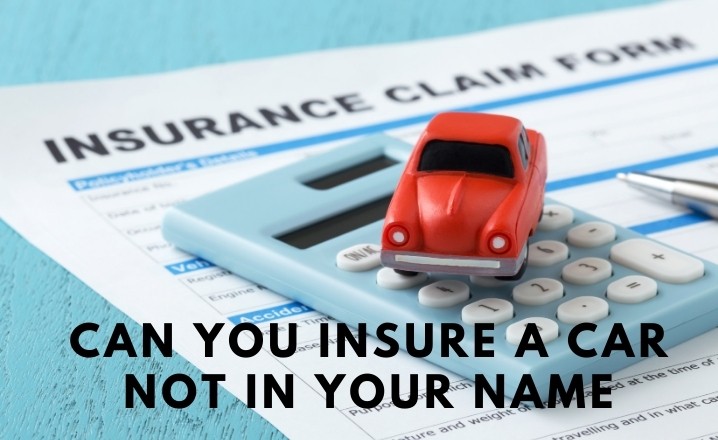Are you planning to drive a car that is not under your name? Perhaps you are borrowing it from a friend or family member, or even renting one for an extended period of time. Whatever the case may be, it’s important to know how auto insurance works when you’re driving someone else’s car.


Understanding Auto Insurance
Auto insurance will typically follow the car rather than the driver. This means that if you get into an accident while driving another person’s vehicle, their insurance policy will generally be responsible for covering any damages or injuries incurred during the accident.
However, before you get behind the wheel of someone else’s car, there are some important things to keep in mind:
Confirm Coverage with the Vehicle Owner
The first step is to confirm whether or not the vehicle owner has adequate auto insurance coverage. If they don’t have enough coverage and an accident occurs while you’re driving their car, both parties can be held liable for any resulting damages and expenses.
Consider Adding Non-Owner Car Insurance
Non-owner auto insurance policies provide liability and sometimes collision coverage when borrowing or renting vehicles on occasion. They cover costs like medical expenses and property damage caused by accidents where another driver is at fault but doesn’t have sufficient liability limits to pay their obligations.
Check Your Own Policy
Check your own auto insurance policy’s declaration page first because it typically lists what requirements are necessary regarding borrowed cars so there isn’t confusion when an incident unfortunately happens.
Some policies extend third-party liability as well as comprehensive/collision coverages onto cars loaned out (depending on state regulation). Others strictly prohibit drivers listed under them of using non-owned vehicles owned by non-family members (these cases warrants adding non-owner)
In summary When driving somebody’s vehicle who isn’t in your household frequently borrow often makes sense purchasing a “non-owners” used-car-insurance policy. Always confirm the vehicle owner’s insurance coverage, consider adding non-owner auto insurance, and check your own policy before driving a car that doesn’t belong to you.
By understanding what you need to know about insuring a car not in your name, you can protect yourself from potential financial burdens and drive with confidence.
FAQs
Can I insure a car that is not in my name?
Yes, you can insure a car that is not registered or titled in your name. However, you will need to provide the insurance company with proof of insurable interest- such as documents showing that you have permission from the vehicle owner to drive and insure the car.
How do I add someone else’s car to my insurance policy?
To add someone else’s car to your insurance policy, you will need to either be listed on the title or be able to prove an insurable interest in the vehicle. You should contact your insurance provider and inform them of this situation, providing relevant documentation if necessary.
What happens if I get into an accident while driving someone else’s uninsured vehicle?
If you get into an accident while driving another person’s uninsured vehicle, their insurance may not cover the damages because you were not listed on their policy. As a result, you may be personally held responsible for any damages or injuries caused by the accident. It is essential always to verify whether there is adequate and active auto insurance coverage on any car before taking it out onto public roadways as implied consent laws often presume drivers are aware they’re operating motor vehicles without coverage
FAQs
**H3: Why Should I Insure Someone Else’s Car Instead of Relying on Their Insurance?**
Answer: There are several reasons why insuring someone else’s car can be advantageous. For instance, their insurance may not cover all the damages or losses, such as personal belongings, rental expenses, or medical bills for passengers. By having your own insurance policy, you can ensure that you’re financially protected in various situations.
**H3: What Factors Affect the Cost of Insuring a Car Not Yours?**
Answer: Several factors influence the cost of insuring a vehicle that isn’t yours. These include factors like the make, model, and year of the car, the location where the car is registered, your driving record, and the level and type of coverage you choose. Other factors like deductibles and previous accidents or tickets associated with the car can also impact the cost.
**H3: How Can I Make Sure I’m Following Legal Requirements When Insuring Someone Else’s Car?**
Answer: It’s crucial to ensure compliance with legal requirements when insuring a car that doesn’t belong to you. Check the insurance policies and conditions of both parties involved to ensure there isn’t any duplication or conflict. Obtain written permission from the car owner and perhaps consult a legal professional for advice to avoid any potential complications
